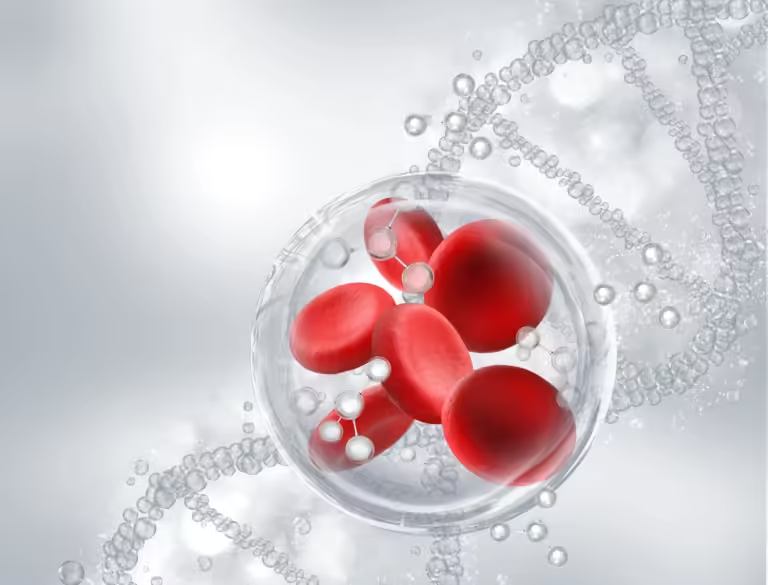Pharmacogenomics education faces a unique challenge: the science is advancing rapidly, but awareness and understanding among both patients and providers lag far behind. Bridging that gap will require more than traditional medical education. It demands innovation in how we communicate complex information at scale.
Few understand this better than Dr. Faisal A. Islam, a physician and healthcare strategist working at the intersection of clinical care, digital innovation, and medical communication. He sees tools like artificial intelligence not as distant promises, but as immediate accelerators that are capable of automating outreach, reducing overhead, and transforming how we transfer complex knowledge like PGx from educators to patients and providers.
Having previously served as a Medical Director at WebMD, Dr. Islam is helping shape how precision medicine is communicated at scale. In this interview, he shares his perspective on what it will take to make pharmacogenomics mainstream, and why AI, media, and medicine must move in lockstep to get us there.
1. Let’s begin with your journey. How did your background in medicine and business lead you to your current role at WebMD, and how does your work intersect with pharmacogenomics and digital health innovation?
Medicine is a language, and so is business. The intersection of these two disciplines has enabled me to engage with the administrative and strategic aspects of healthcare, particularly in Medical Director roles that require close collaboration with KOLs and other strategic stakeholders. My foundation in both domains has been essential in navigating these partnerships effectively.
In the past, I was involved in pharmacogenomic education at Alivation, a contract research organization (CRO), and I currently collaborate with PGx initiatives. I see digital health innovation—and newer content delivery mechanisms such as AI—as powerful tools for expanding outreach and accelerating knowledge transfer. These innovations help shorten the gap between educators and patients, enabling faster adoption of complex topics like pharmacogenomics.
2. WebMD plays a critical role in patient and provider education. What opportunities do you see for improving public understanding of pharmacogenomics through digital platforms?
As part of the largest network for health and medical education, WebMD—particularly through its Medscape platform—has significant potential to advance pharmacogenomic literacy. Medscape’s capacity for multimodal CME content delivery makes it an ideal platform for educating healthcare professionals in a dynamic and accessible way. While pharmacogenomics is currently underrepresented in CME offerings, I anticipate a shift in this trend. In the near future, I expect proprietary conferences and educational events to feature pharmacogenomics not merely as a side topic, but as a central pillar in discussions around precision medicine, clinical innovation, and patient care. Digital platforms like these will play a pivotal role in scaling awareness and fostering deeper engagement with PGx across specialties.
3. From a strategic standpoint, what are the biggest hurdles to making PGx mainstream, and how can media, tech, and healthcare stakeholders collaborate to solve them?
One of the biggest hurdles is effectively communicating the benefits and urgency of integrating PGx into mainstream healthcare. We must frame the conversation not just in terms of innovation, but also in terms of addressing unmet needs in diagnostics and treatment.
Media can help generate awareness and normalize these conversations. Technology—especially AI—can accelerate content delivery and reduce overhead by automating outreach and education. Healthcare stakeholders, in turn, need to be made aware of how these advancements can enhance precision, efficiency, and ultimately, patient outcomes. The synergy of these sectors is essential for widespread adoption.
4. As a physician and healthcare leader, how do you envision the role of PGx evolving in clinical workflows over the next few years?
As tools for pattern recognition and data integration improve, I foresee PGx becoming a routine component of clinical decision-making. Diagnostic precision will improve, leading to more personalized treatment pathways.
In fields like neurology—where we’re still unraveling the pathogenesis of many neurodevelopmental and neurodegenerative conditions—PGx could play a transformative role. I believe we’re on the brink of a breakthrough, and once early roadblocks are overcome, the field will expand rapidly. Integration into clinical workflows will become less of a novelty and more of a necessity.
5. Finally, where do you see the pharmacogenomics field five years from now, and what key message would you like to leave with our audience about its future?
In five years, I envision broad interdisciplinary adoption of PGx across healthcare settings, more efficient delivery models, and reduced skepticism among both patients and providers.
Looking further ahead, I anticipate more radical advancements, including the integration of evolutionary genomics into our understanding of human health. Initiatives like the Neanderthal Genome Project may eventually inform longitudinal studies that deepen our insights into the genetic underpinnings of both mental and somatic illnesses. By cross-referencing ancient and modern genomic data, we can enhance the precision of diagnostic and therapeutic approaches.
| The key message I’d leave is this: Pharmacogenomics isn’t just a future possibility—it’s an evolving present. As we continue to integrate it into the fabric of healthcare, it holds the promise to transform how we understand, treat, and ultimately prevent disease. |
Dr. Islam’s perspective is a powerful reminder that scaling pharmacogenomics isn’t just a clinical challenge but a communication one as well. Until awareness, infrastructure, and education models catch up with the science, PGx will remain underutilized, despite its transformative potential.
As he notes, “Technology, especially AI, can accelerate content delivery and reduce overhead by automating outreach and education.” But for that to happen, healthcare, media, and tech stakeholders must work in sync to reimagine how we teach, learn, and implement personalized care. It will take bold collaboration, creative delivery, and a willingness to disrupt outdated models, because the future of precision medicine depends on it.




